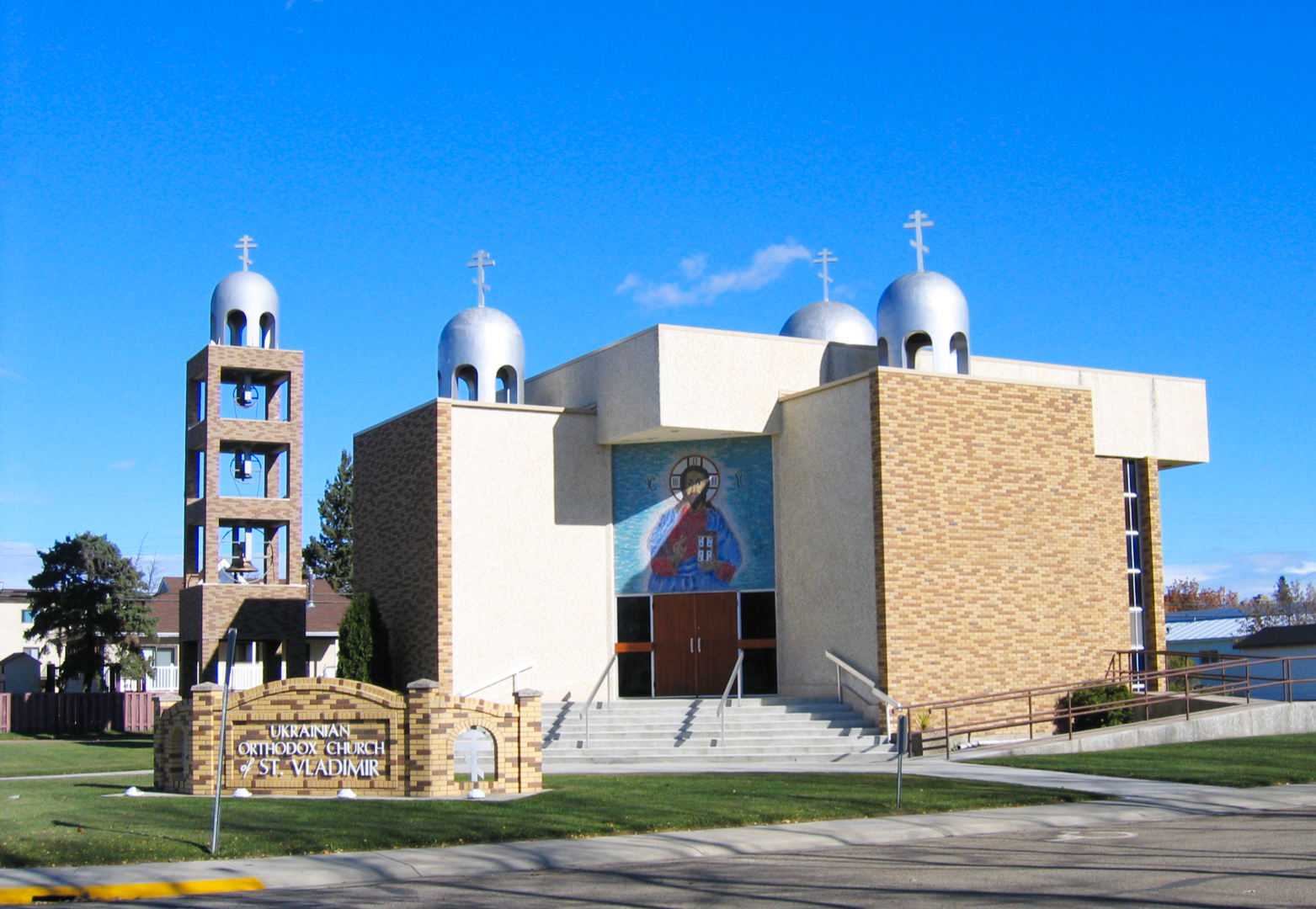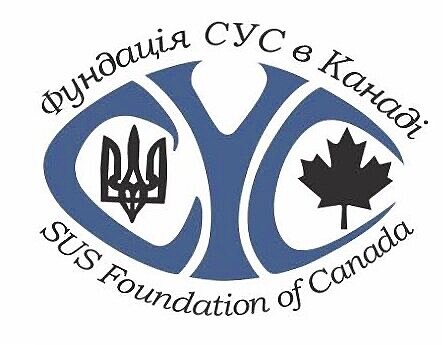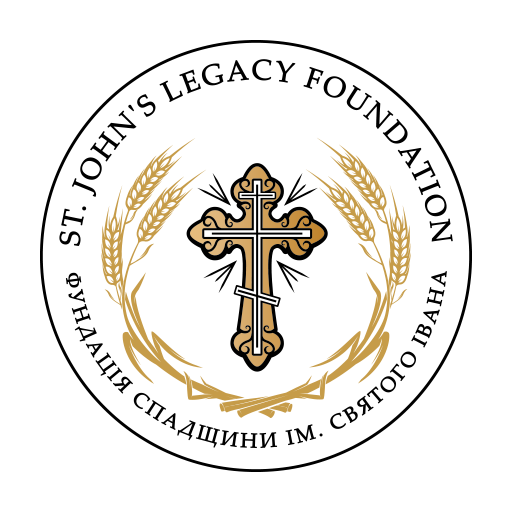

Photographs | Churches
Supporters of the Ukrainian Orthodox Church in Vegreville initially attended services at the Dormition of St. Mary Church in the Sich-Kolomea district, 8 miles northeast of Mundare, and 9 miles northwest of Vegreville. Although a Russo-Orthodox Church dedicated to St. John the Baptist was built in Vegreville in 1922-23 (a congregation initially having been organized almost a decade earlier), it failed to attract followers among nationally conscious Ukrainians because of its Russophile orientation and Russian affiliation. As the number of Ukrainians Orthodox adherents living in Vegreville increased, it became increasingly inconvenient for them to have to travel to Sich-Kolomea to worship, especially when poor weather adversely affected road conditions. The decision to create a congregation in Vegreville was made at a meeting held at the home of William and Anna Pidruchney on March 8, 1928. At that time, an interim executive was formed with Peter Svarich as President, William Pidruchney as Secretary, and William Kieryluk as Treasurer. The first Divine Liturgy was then celebrated at the Vegreville National Home (5146-51 Avenue) on March 31, 1928, with Rev. Ivan Maiba, the pastor at Sich-Kolomea, officiating.
The interim executive oversaw the organization of the parish until a general meeting was held on October 13, 1929. Thirty-four people attended the gathering, which elected an executive, headed again by Peter Svarich, with W. Pidruchney becoming Treasurer and W. Zaruby taking over as secretary. Subsequently, a total of 34 individuals and eighteen families paid $5 in memberships to belong to the congregation, that immediately initiated a campaign to raise funds for the construction of a sanctuary.
Two designs were considered for the church once the congregation was ready to proceed with construction. One design was prepared by Harry Osiecki, a master carpenter and talented cabinetmaker who had settled in Vegreville around 1910. Osiecki subsequently established a successful woodworking and construction business, developing a local reputation for his skilled application of different finishes and polishes and for his ability to build houses using only a picture. He also became renowned for his ability to construct the onion-shaped domes that adorn traditional Ukrainian churches in a way that they would not leak. Among the churches that he constructed were St Mary’s Ukrainian Orthodox Church at Szypenitz (1913 and again in 1917), and Holy Ascension Ukrainian Catholic Church in New Kiew (in 1918-19). He also assisted in the construction of St. John the Baptist Ukrainian Catholic Church in Borshchiw (1939-40). Always a heavy drinker, the personable Osiecki became increasingly dependent on alcohol and his once-flourishing businesses steadily declined so that by the time of his death in 1946 he was a pauper.
A second design was produced by John Svarich, Peter Svarich’s brother, who in 1929 had completed an engineering degree at the University of Alberta. Although both men belonged to the St. Vladimir congregation, John was always active in church affairs and in various Ukrainian cultural endeavours, whereas Harry was only peripherally involved in organized Ukrainian community life, in addition to being plagued by some personal problems. Members eventually decided to go with John Svarich’s proposed plan, partially because it was cheaper to build. Nevertheless, Harry Osiecki was given the contract to oversee the construction of the church, for which he was to be paid $0.55 cents an hour.
However, Osiecki’s drinking problems soon got the better of him, and the congregation had to let him go and hire Stanley Bellegay to complete the job. Bellegay had become a partner in Osiecki’s business in the 1920s and was therefore accustomed to having to deal with the negative fallout from Harry’s drinking problems. Although not as talented a carpenter and slower in finishing jobs, he nonetheless saw the construction of St. Vladimir’s church through to completion in 1935. The total cost of the project was $3,582.68, a not inconsiderable sum for a congregation to have to raise in the middle of the Depression.
The church constructed on the southeast corner of 52 Street and 49 Avenue. The ikonostasis was carved by Ivan Tkach of Smoky Lake. In 1956 the church was expanded to accommodate the growing needs of the congregation. The widest part of the nave was doubled in size, and the apse was moved back 18 feet.
As the town of Vegreville grew in the 1960s, thanks in part to an influx of Ukrainians from the surrounding countryside, the Orthodox community outgrew the original church. It was decided to build a larger and more modern place of worship on a property immediately south of the original sanctuary, at 5146-48 Avenue. After the site was blessed in 1972, construction began the following year.
On October 21, 1973, a final service was held at St. Volodymyr’s Church, a somewhat solemn event that concluded with members carrying the banners, cross, and other objects from the old church in a procession to the new sanctuary, with the priest bearing the chalice.
Afterwards, the old St. Volodymyr’s Church was essentially abandoned, much to the chagrin of a prominent long-time member, Anna Pidruchney, who felt that it deserved to be treated like a mother. Writing to the Consistory in 1977, Mrs. Pidruchny lamented that the church which she had helped to build was now neglected and disregarded by younger members of the congregation, She then offered to buy the old church with the intention of seeing it revitalized with a new congregation that would not compete with current members as it would be comprised of people who were determined to resist assimilation and the erosion of traditional values as well as disenchanted Ukrainian Catholic and Russian Orthodox adherents. Eventually, the “old” St. Volodymyr’s church was moved to the Ukrainian Cultural Heritage Village in 1983, where it was restored to its pre-expansion dimensions and today serves as an occasional setting for weddings and other events.
Polytaiko of Chernivtsi, Ukraine, was commissioned to carve an iconostas for the church, which his son, Deacon Nazar Polytaiko, of Winnipeg, subsequently adorned with ikons.
Play Memory Eternal Chant
Visit this Cemetery
GPS Co-ordinates: 53.495498, -112.059188
Cemetery Co-ordinates: 53.52804,-112.18853
Affiliation: Ukrainian Orthodox Church of Canada





